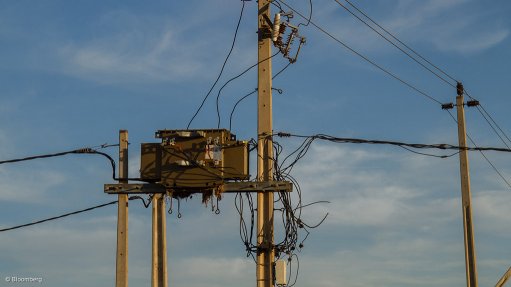
AILING INFRASTRUCTURE Damaged and outdated electrical infrastructure is impeding Africa's socioeconomic growth
Photo by: Bloomberg
Most infrastructure investments on the African continent are in the energy sector, but power plants and transmission lines across Africa presently operate at a fraction of installed capacity, owing to insufficient maintenance and lack of modernisation.
Across the continent, infrastructure – power plants and transmission lines – most of which was erected in the 1950s and 1960s, is either disrupted, damaged or nonexistent. However, investment in energy infrastructure is critical to the continent reaching its economic potential and exploiting its current growth trend.
Meeting the demands for Africa’s critical energy infrastructure was in the spotlight at the annual Infrastructure Africa Business Forum, held in September last year at the Sandton Convention Centre.
According to the lobby group Africa Progress Panel in its 2015 ‘Power, People, Planet’ report, sub-Saharan African governments should be aiming to increase electricity-generation capacity tenfold and achieve universal access to electricity by 2030. The International Energy Agency recommends that Africa raise energy generation by 4% yearly until 2040.
Sub-Saharan Africa has only 90 GW of electricity-generation capacity and energy constraints are costing the continent 2% to 4% of gross domestic product every year. However, some progress is evident as there are now 130 independent power producers (IPPs) in sub-Saharan Africa.
Additionally, about 27 private- equity investments were made in energy between 2010 and 2013, valued at $1.2-billion. This boost is partly owing to President Barack Obama’s Power Africa initiative, the increased energy cooperation between Europe and Africa, Chinese project finance for large-scale power projects, and South Africa’s renewable-energy programme.
“Energy infrastructure changes the economy . . . from an employment perspective. It’s a key enabler and the rest follows. Good infrastructure also makes us more competitive at a global level. Energy infrastructure needs to lead rather than lag,” says energy company Sasol business development for power VP Kribs Govender.
According to equity investor African Infrastructure Investment Managers head of transctions Romain Py: “Africa’s lack of infrastructure development comes down to policy failures and the stability of the regulatory environment. “No one will invest without a clear policy environment. If we as investors feel the policy is unclear or not sustainable, we will not invest.”
IPP Basil Read Energy director Ian Curry states that, “[Stake-holders] need to meet the needs of energy in Africa from an African perspective. The challenges that Africa has from primary resources through to consumers must be solved by Africans and on a regional basis. This historical nationalistic focus we have in South Africa and sub-Saharan Africa is not healthy and we must think beyond our borders, not just as South Africans, or Zimbabweans, but as Africans.”
Meanwhile, nonprofit energy consumer organisation Energy Intensive Users Group director Shaun Nel notes that, “from a policy and consumer level and from a planning perspective, three things need to be looked at with regards to energy infrastructure, namely, security of energy supply, affordable . . . energy source[s] and . . . the impact of [the] energy source on local environment and sustainability”.
In conclusion, Curry adds that, “We need to align ourselves regionally. Regional integration needs to be looked at right down to the consumer level, but national pride often stands in the way. But our wealth and economic prospects lie within the region.”